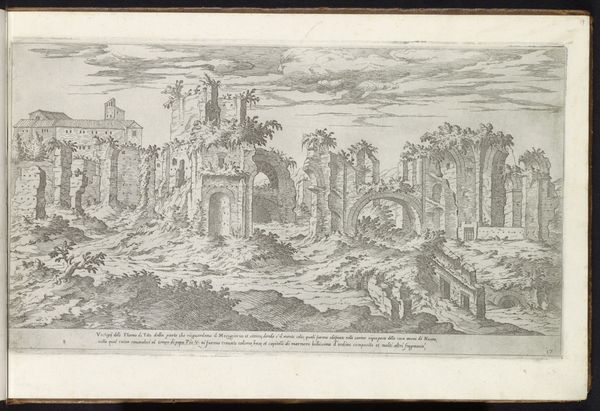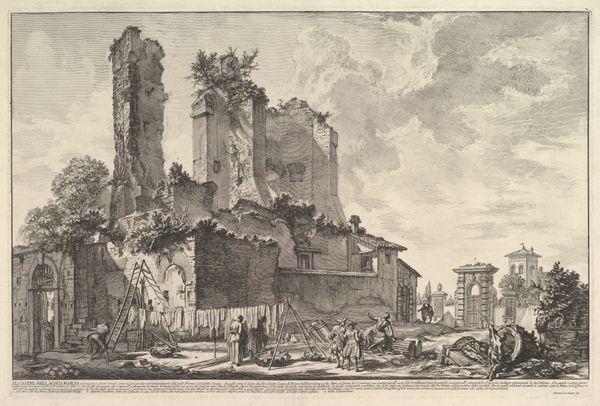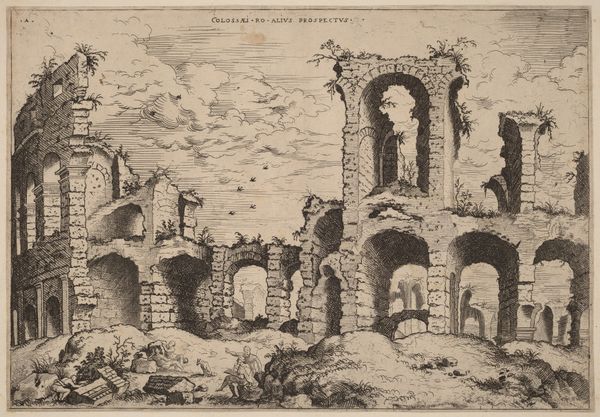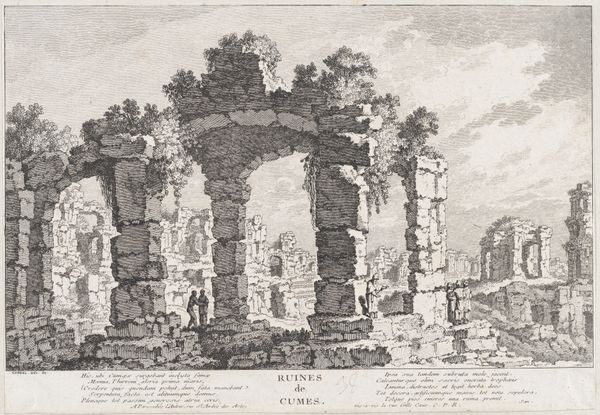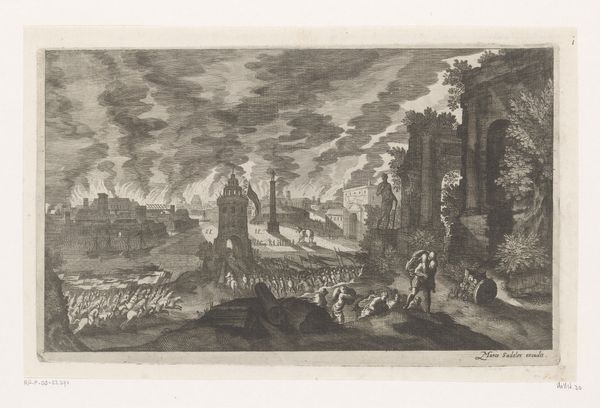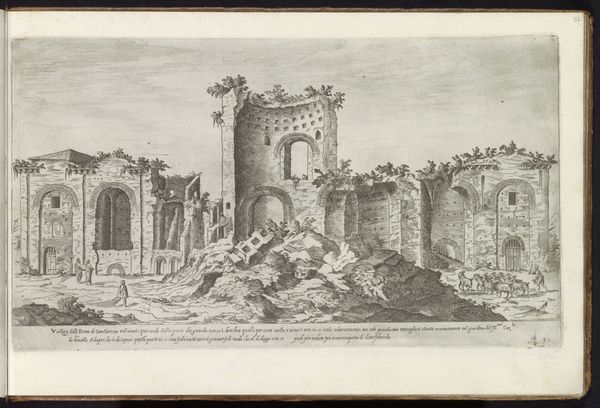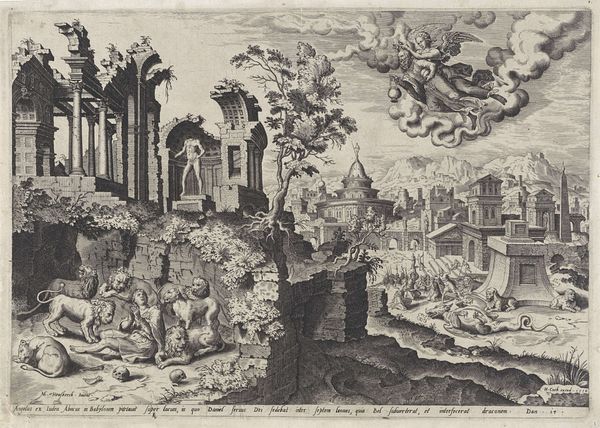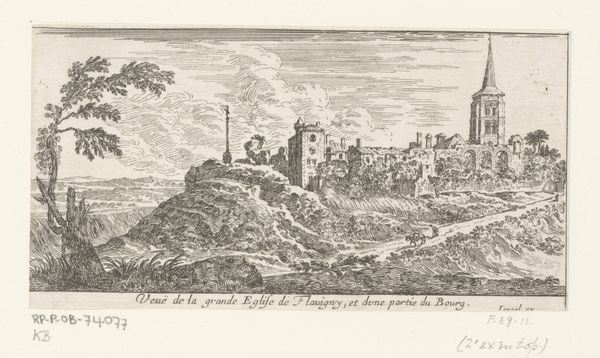
drawing, print, etching, architecture
#
drawing
# print
#
etching
#
landscape
#
etching
#
romanesque
#
architecture
Dimensions: Sheet: 7 11/16 × 11 1/8 in. (19.5 × 28.2 cm)
Copyright: Public Domain
Editor: We’re looking at "Ruines de Cumes," an etching by Quentin Pierre Chedel, dating from around 1720 to 1762. It feels incredibly…melancholic. All those crumbling structures. What do you see in this piece? Curator: Melancholic, yes, but also strangely beautiful, don't you think? There’s a sense of… poetic desolation. Imagine, this print captures Cumes, an ancient city, viewed centuries later! The ruins whisper stories, secrets lost to time. Look closely – do you notice how the figures are dwarfed by the scale of the architecture? Editor: Yes! They seem so small and insignificant against the ruins. Curator: Precisely. It highlights the impermanence of human endeavor. It's like Chedel is pondering mortality itself through architecture. Don’t you feel that little shiver, that thrilling sense of the sublime? Editor: I do now! It's more than just an image of ruins; it's about the passage of time. It's amazing to think that Chedel, back in the 18th century, was already fascinated with ruins in a way that's similar to modern ruins photography. Curator: Exactly! History echoes. It reminds me of visiting Rome and feeling completely overwhelmed by its many eras…layers upon layers of history visible all at once! "Ruines de Cumes" isn't just a landscape; it's a meditation on history. And I think, a commentary on how even empires crumble. Editor: I didn't catch that at first. Now I see those echoes, it makes the piece so much richer. Thanks for the insights! Curator: My pleasure! And isn't it wonderful how a simple etching can spark such profound thoughts? I adore that!
Comments
No comments
Be the first to comment and join the conversation on the ultimate creative platform.


